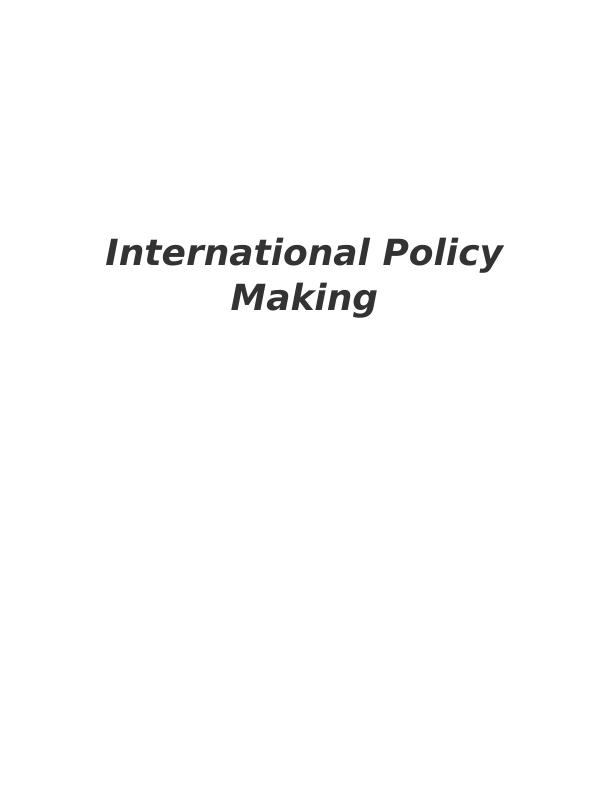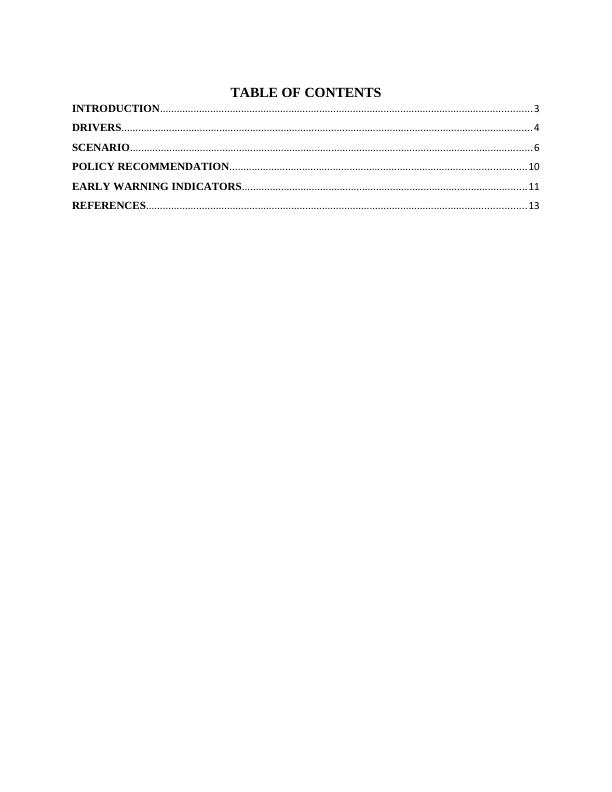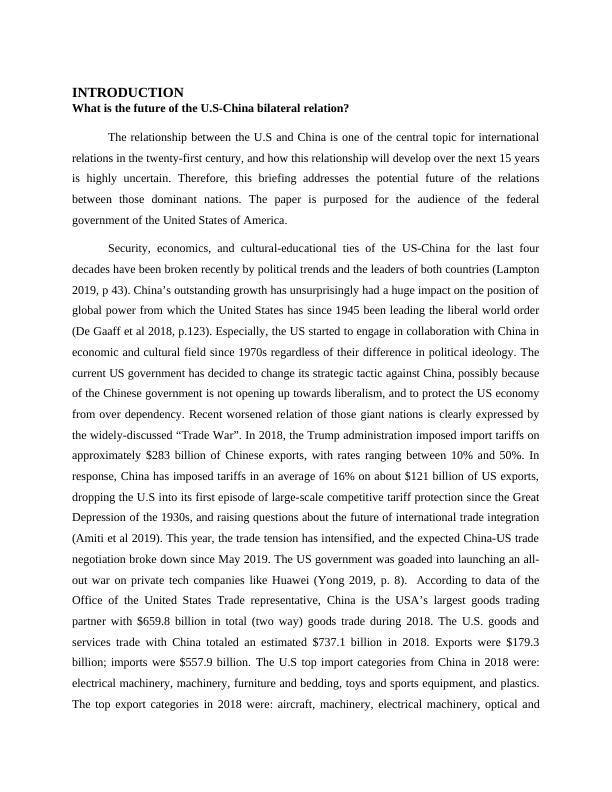Future of U.S-China Bilateral Relations
13 Pages4383 Words85 Views
Added on 2023-01-19
About This Document
This briefing paper explores the potential future of the relations between the U.S and China, focusing on the impact of the trade war, balance of hard power, and Chinese political liberalization. It discusses the scenarios of supreme bipolarity and status quo, and provides early warning indicators for each scenario.
Future of U.S-China Bilateral Relations
Added on 2023-01-19
ShareRelated Documents
End of preview
Want to access all the pages? Upload your documents or become a member.
Assignment on International Relations 1
|10
|2955
|14
Trade War Between US and China - Article
|11
|3448
|22
Economic Arguments for and against US Tariffs on Chinese Goods
|8
|2116
|411
Trade War between China and the United States - Microeconomics
|5
|1218
|345
Protectionism and Its Effects on Global Trade
|6
|1334
|482
Trade War Between USA and China Topic 2022
|9
|523
|9




